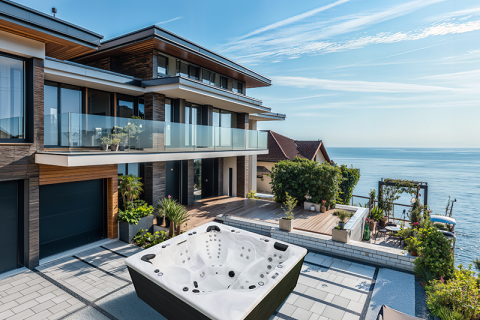
News
Drowning risk This is one of the most obvious risks. Sleeping in an outdoor spa bathtub may cause people to slip or sink their heads into the water. No matter how high the water level in the spa bathtub is, it is difficult to maintain balance when a person loses consciousness while sleeping, especially under the buoyancy of the water, the body may slide deeper into the water.
If the whirlpool spa bathtub is a frequently used device, it is recommended to clean the jets once a month. If the frequency of use is low, the cleaning interval can be extended, but deep cleaning should be performed at least once every three months.
In general, it is necessary to test the outdoor whirlpool hot tub water quality at least once a week. This applies to most whirlpool hot tubs for home and private use. Testing once a week can help detect water quality problems such as high or low pH, insufficient chlorine content, etc. in time.
Most outdoor hot tub covers have a very limited weight capacity, usually between 50 and 100 pounds (about 23 to 45 kilograms). This means that they can withstand some minor pressure, such as the weight of leaves, snow or rain, but are not suitable for adults or heavy objects to sit directly on them.
The work of the water pump is the basis for maintaining water flow and massage effect. If the water pump is turned off while there is still water in the outdoor spa Jacuzzi tub, the following problems may occur: ● Dry running of the pump body ● Uneven pressure
The depth of soaking bathtubs is usually 60-80 cm, enough for water to cover the neck, which can provide a deeper relaxation experience. The design of freestanding hot bathtubs is mainly for lying flat, usually spacious, long, and relatively shallow, about 45-60 cm.
Although there is a possibility of virus transmission, it does not mean that it will definitely spread in large quantities in the water. In fact, the risk of herpes transmission in an outdoor whirlpool hot tub is not high. The key is whether there is an opportunity for direct contact with an infected person.
Bluetooth audio system is the most common type of audio system currently. Many outdoor spa Jacuzzi tubs are equipped with built-in Bluetooth speakers, which users can connect to wirelessly through their mobile phones, tablets or other devices to play their favorite music.
When air humidity is low, water evaporates faster. When the air already contains less water vapor, water evaporates faster into the air. Therefore, in dry summers, especially in areas with dry climates, water in an outdoor hot bathtub evaporates more easily.
during the rainy season or when leaves fall a lot, covering the whirlpool spa hot tub can effectively prevent water contamination. In the dryer climate and warmer seasons, if the tub is not used for a long time, keeping the lid open can help ventilate and prevent bacteria from growing.










